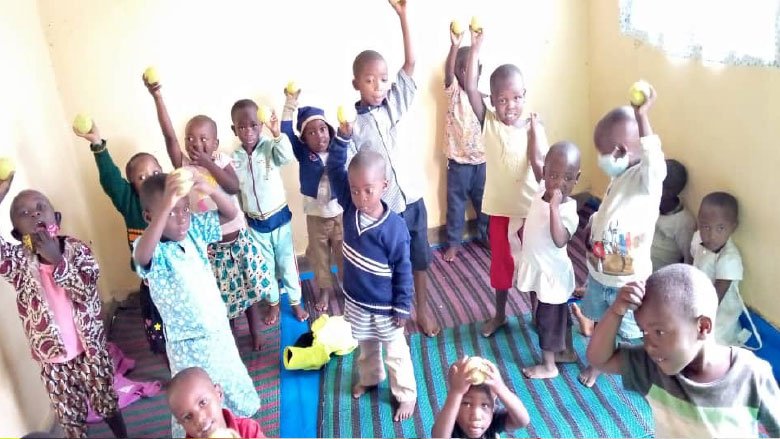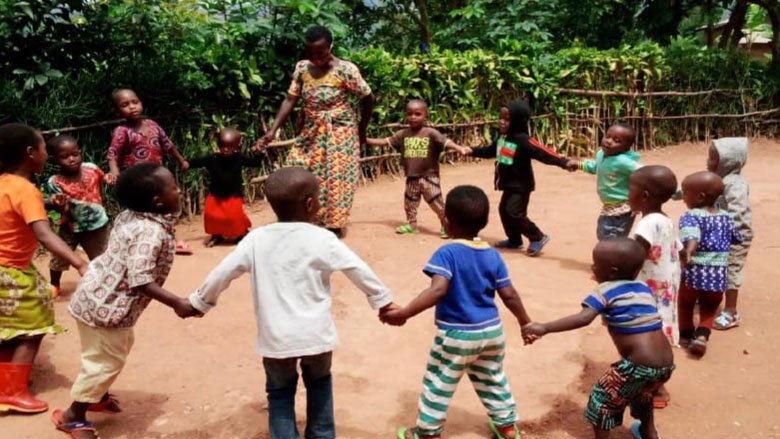Challenge
Before the COVID-19 pandemic, Rwanda had sustained per capita economic growth of about five percentage points per year since 2000. Poverty and extreme poverty had fallen substantially, with the former falling from 58.9 percent of the population to 38.2 percent and the latter declining from 40 percent to 16 percent between 2001 and 2017. Rwanda struggled, however, to translate strong growth into commensurate gains in poverty reduction and, compared to countries with similar per capita income levels, had relatively high poverty rates. Social Protection (SP) program coverage remained low, reaching only 4.4 percent of the total population. Stunting affected 38 percent of children under five and was concentrated among poorer households. The flagship VUP was largely driven by labor intensive public works (LIPWs), which were not conducive for beneficiaries with care responsibilities, particularly women, leading to self-exclusion. In addition, the low number of workdays offered by LIPWs limited the potential benefits of the program, which had unintended consequences concerning the care and nutrition of young children. Cash transfers were also not predictable and timely, with delays of up to two months or beyond. Birth registration and certification, an essential step towards accessing child- and nutrition-sensitive SP programs, had a number of inefficiencies, such as requiring birth registrants to travel far to complete paperwork, which affected the poorest in accessing child focused benefits and services.
Approach
The project sought to improve the effectiveness of Rwanda’s Social Protection (SP) system, notably the flagship VUP, for targeted vulnerable groups, and was part of an innovative World Bank program to combat malnutrition in the early years, this being one of the national policy priorities. This policy objective was supported by the introduction and scaling up of gender-, child-, and nutrition-sensitive innovative interventions. These included:
- The Home-Based Early Childhood Development (HB-ECD) intervention under the expanded Public Works (ePW), which enabled poor beneficiaries with care work responsibilities to be employed as caregivers in dedicated HB-ECD centers and to get paid while learning and delivering nutrition, early stimulation, and better parenting knowledge and practices;
- The Nutrition Sensitive Direct Support (NSDS), a Co-responsibility Cash Transfer (CCT) scheme targeted at the poorest households with pregnant women and/or children under two years, aimed at incentivizing the intake of essential health and nutrition services during the early years of life
- The strengthening of Rwanda’s Civil Registration and Vital Statistics (CRVS) system, particularly to support the effective implementation of the NSDS via improved birth registration. Other interventions focused on strengthening the VUP through the scale up of the classic Public Works (cPW) and Unconditional Cash Transfers (Direct Support) interventions; increasing number of days worked under cPW to increase adequacy of payments; and enhancing the timeliness of payments.
The design of the overall program, including the SP project, benefitted from strong analytical work and leveraged relevant international and in-country experiences to support evidence-based interventions.
Results
The project made substantial contributions to improving the productivity and income of the poor by using social protection. Significant expansion in the overall coverage of the VUP core safety net components helped to reach 92 percent of all eligible households from a baseline of 67 percent, in targeted districts, exceeding the project’s end target of 70 percent. The innovations introduced by the project contributed towards making the SP system more robust and effective to accelerate the human capital development agenda, including the design and rollout of gender-, child-, and nutrition-sensitive safety net interventions. The share of VUP beneficiaries in these interventions increased from 19 percent in March 2020 to 41.5 percent in December 2021. Leveraging safety nets to support enhanced nutrition and ECD outcomes, the project played an important role in Rwanda’s fight against childhood malnutrition. The NSDS CCT alone has so far benefited over 200,000 households, over three times higher than the end target of 59,000 households (96 percent of eligible households covered in 18 targeted districts).
Scaled-up, predictable VUP cash transfers played a large role in smoothing consumption for the poor and vulnerable, promoting human capital and strengthening the resilience of poor households to shocks. The project’s signature achievements include:
- Increased coverage of the VUPs core components (ePW, cPW, Direct Support) to 491,234 households (almost doubling from the baseline), with women making up over half of its beneficiaries
- Increased timeliness of VUP payments with 71 percent of the ePW, 100 percent of the Direct Support, and 97 percent of the classic PW beneficiaries receiving payments on time.
- Introducing and expanding the coverage of nutrition, gender- and child-sensitive interventions, with ePW aimed at supporting labor constrained households, mostly women, providing them with year-long and predictable income support. 92,144 beneficiaries were reached to date, surpassing the end target of 82,572.
- Strengthening CRVS to enable the registration and certification of births and deaths at the places of event (health facilities and administrative Cells) closest to the population; and accompanying changes in family law to allow selected staff at health facilities and Cell Executive Secretaries to play the role of Civil Registrars. As of September 2021, 94 percent of births at health facilities and at local government level are registered within 30 days after a live birth.
- Pioneering digitized social protection payments, including prerequisite upgrades to the SP Information System
- Adaptations to support the response to COVID-19 by expanding the eligibility criteria for NSDS, allowing the expansion in coverage from 30,000 beneficiaries in March 2020 to more than 200,000 beneficiaries by the end of 2021; and the temporarily waiving of work requirements for public works’ beneficiaries to comply with lockdown and containment measures related to COVID-19, benefiting over 211,031 beneficiaries.


